One of Asia’s staple food products is a health risk. A commentator for the conservative US site World Net Daily has warned that “a devil food is turning our kids into homosexuals.”:

Soy is feminizing, and commonly leads to a decrease in the size of the penis, sexual confusion and homosexuality. That’s why most of the medical (not socio-spiritual) blame for today’s rise in homosexuality must fall upon the rise in soy formula and other soy products. (Most babies are bottle-fed during some part of their infancy, and one-fourth of them are getting soy milk!) Homosexuals often argue that their homosexuality is inborn because “I can’t remember a time when I wasn’t homosexual.” No, homosexuality is always deviant. But now many of them can truthfully say that they can’t remember a time when excess estrogen wasn’t influencing them.
A comment AP has received from a friend in Canada debunks the article:
There are a host of things wrong with this article. The assumption that being gay is bad, and should be curtailed. The anecdotal presentation of unnamed scientific studies as fact (cite them, darn it, and check literature reviews for other research). The assumption that sexual preference is connected to hormones. (If it makes penises smaller, it must make men gay!) The logical contradiction provided in his conclusion, when he says some soy is okay. The avoidance of contrary evidence - if soy is more prevalent now than in the past, and causes gayness, then one would expect population studies to show this. Where is “today’s rise in homosexuality” that he talks about? Television sitcoms? Same-sex legislation?
AP had already disregarded the validity of the article due to the use of “devil food’ in the headline. As we are of Irish ethnicity, we reject the idea that Soy milk is the devil when another beverage can make a claim that is much more solid. And this site will not speculate about what high soy content in a national diet may mean for penis size (commentors can fire away).
That said, Rutz — to his credit– does note that there is no risk from the consumption of soy sauce or other products that contain fermented soy. With that, readers can rest assured that neither natto nor stinky tofu will cause shrinkage or impotence (although the associated bad breath may limit attractiveness)..
Technorati Tags: asia, east asia, northeast asia, southeast asia
 Happy Herb’s began in the heady days when the UN ruled Cambodia while they tried to sort out some half-decent elections. Cambodia was flooded with danger-seeking fools with astronomical wages which they squandered on drugs, prostitutes and fine dining. Herb was taught to cook pizzas by one of this crew, and suggested adding ganja, a traditional Khmer ingredient. (Later in the meal a veteran of the UN Transitional Authority in Cambodia came over, steaming drunk and blazing a big Sherlock Holmes style pipe. “I used to be Very Important!” he said to a military policeman who couldn’t understand English. “I was an Election Monitor in 93!” His Khmer wife and child stood back in embarrassment.)
Happy Herb’s began in the heady days when the UN ruled Cambodia while they tried to sort out some half-decent elections. Cambodia was flooded with danger-seeking fools with astronomical wages which they squandered on drugs, prostitutes and fine dining. Herb was taught to cook pizzas by one of this crew, and suggested adding ganja, a traditional Khmer ingredient. (Later in the meal a veteran of the UN Transitional Authority in Cambodia came over, steaming drunk and blazing a big Sherlock Holmes style pipe. “I used to be Very Important!” he said to a military policeman who couldn’t understand English. “I was an Election Monitor in 93!” His Khmer wife and child stood back in embarrassment.)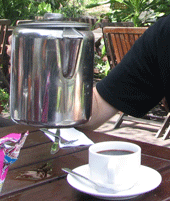 Kota Kinabalu: The Health Ministry has uncovered a coffee company’s ploy of mixing its coffee powder products with Viagra just to make the coffee extra special.
Kota Kinabalu: The Health Ministry has uncovered a coffee company’s ploy of mixing its coffee powder products with Viagra just to make the coffee extra special.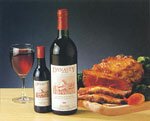 BEIJING, June 5 — Dark soya sauce, widely used in East Asia, may prove to be more effective than red wine and vitamin C in combating human cell damage, researchers in Singapore said.
BEIJING, June 5 — Dark soya sauce, widely used in East Asia, may prove to be more effective than red wine and vitamin C in combating human cell damage, researchers in Singapore said.
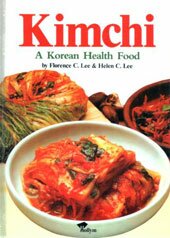 The researchers, all South Korean, report that kimchi and other spicy and fermented foods could be linked to the most common cancer among Koreans. Rates of gastric cancer among Koreans and Japanese are 10 times higher than in the United States.
The researchers, all South Korean, report that kimchi and other spicy and fermented foods could be linked to the most common cancer among Koreans. Rates of gastric cancer among Koreans and Japanese are 10 times higher than in the United States. I’ve been doing quite a bit of thinking about Restaurant magazine’s survey of the world’s fifty best restaurants and how few restaurants from Asia, Australia and the Pacific islands were represented in it. So, in a bold (and perhaps hubristic) move, I’ve decided to try and build a comprehensive listing of Asia-Pacific’s best restaurants.
I’ve been doing quite a bit of thinking about Restaurant magazine’s survey of the world’s fifty best restaurants and how few restaurants from Asia, Australia and the Pacific islands were represented in it. So, in a bold (and perhaps hubristic) move, I’ve decided to try and build a comprehensive listing of Asia-Pacific’s best restaurants. RFE/RL reports that
RFE/RL reports that  Adhering to a plan Moon spelled out more than three decades ago in a series of sermons, members of his movement managed to integrate virtually every facet of the highly competitive seafood industry. The Moon followers’ seafood operation is driven by a commercial powerhouse, known as True World Group. It builds fleets of boats, runs dozens of distribution centers and, each day, supplies most of the nation’s estimated 9,000 sushi restaurants.
Adhering to a plan Moon spelled out more than three decades ago in a series of sermons, members of his movement managed to integrate virtually every facet of the highly competitive seafood industry. The Moon followers’ seafood operation is driven by a commercial powerhouse, known as True World Group. It builds fleets of boats, runs dozens of distribution centers and, each day, supplies most of the nation’s estimated 9,000 sushi restaurants. BEIJING, April 11 — Thanks to a growing interest in gourmet foods, China is aiming to become one of the world’s biggest producers of foie gras made from goose liver in the coming years.
BEIJING, April 11 — Thanks to a growing interest in gourmet foods, China is aiming to become one of the world’s biggest producers of foie gras made from goose liver in the coming years.
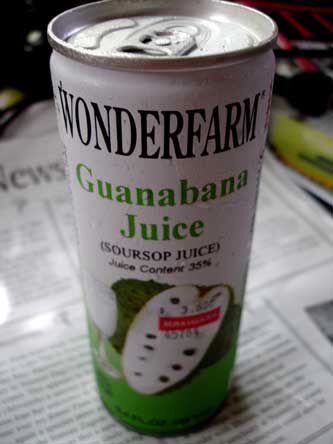

 Reports that the KMT walks lockstep with the mainland (China) in their anti-Japan campaign do not reflect my real feelings. I even love sashimi!” On the 10th Ma Ying Jiu (mayor of Taipei), chairman of the KMT[Chinese Nationalist Party], Taiwan’s largest opposition party, assembled Japanese reporters resident in Taipei and issued a denial of the viewpoint that he was himself a believer in anti-Japan ideology.
Reports that the KMT walks lockstep with the mainland (China) in their anti-Japan campaign do not reflect my real feelings. I even love sashimi!” On the 10th Ma Ying Jiu (mayor of Taipei), chairman of the KMT[Chinese Nationalist Party], Taiwan’s largest opposition party, assembled Japanese reporters resident in Taipei and issued a denial of the viewpoint that he was himself a believer in anti-Japan ideology. Doosan Corp. unveiled yesterday its new brand of soju, with a slightly lower alcohol content and a slightly lower price.
Doosan Corp. unveiled yesterday its new brand of soju, with a slightly lower alcohol content and a slightly lower price.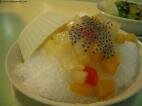 I’ll let you all bicker as to whether the stylized fact is true only in the USA, or across the world. I don’t know if the following explanation is true, but finally I have heard an explanation which might plausibly be true:
I’ll let you all bicker as to whether the stylized fact is true only in the USA, or across the world. I don’t know if the following explanation is true, but finally I have heard an explanation which might plausibly be true: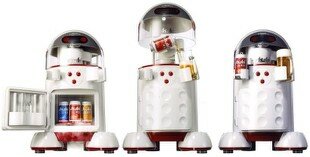


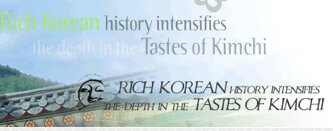


 BEIJING, Nov. 1 (Xinhuanet) — The State Administration of Quality Supervision, Inspection and Quarantine (SAQSIQ) has announced 10 kinds of food products made by certain factories in the Republic of Korea (ROK) are barred from entering the country.
BEIJING, Nov. 1 (Xinhuanet) — The State Administration of Quality Supervision, Inspection and Quarantine (SAQSIQ) has announced 10 kinds of food products made by certain factories in the Republic of Korea (ROK) are barred from entering the country.

































